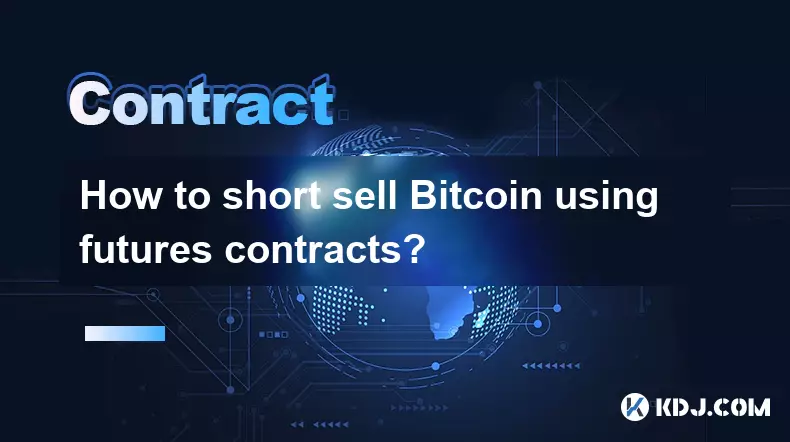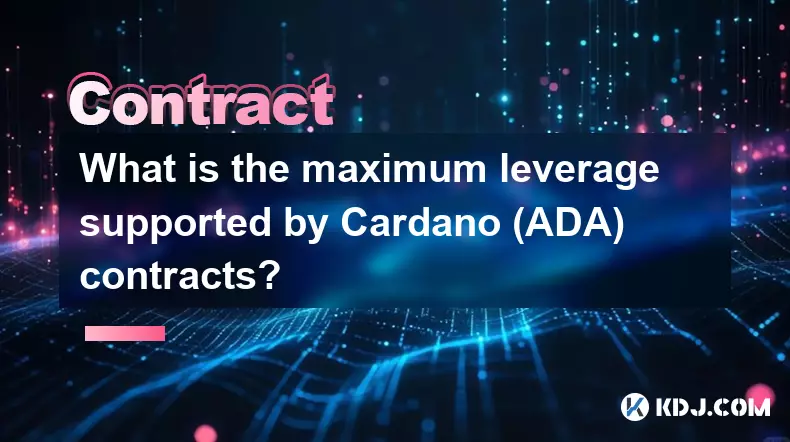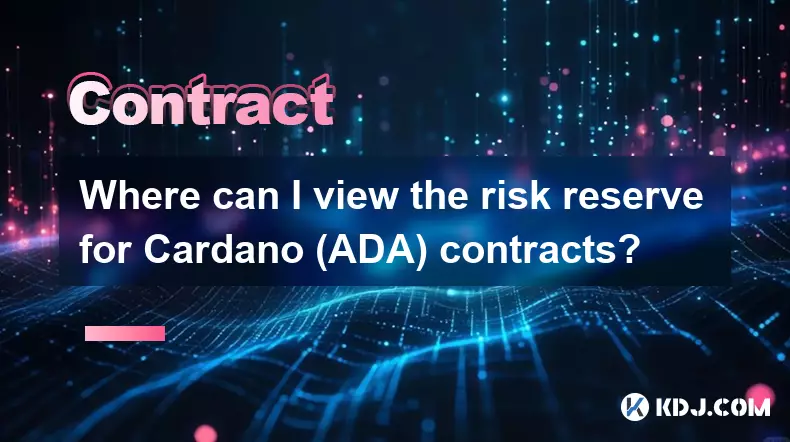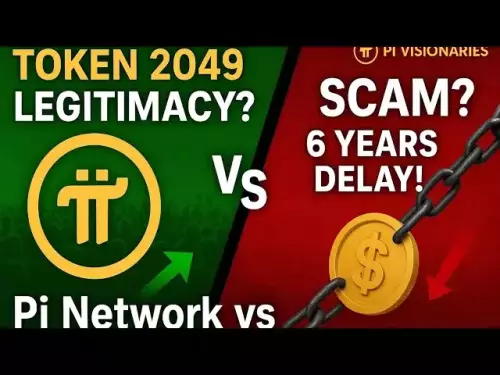-
 bitcoin
bitcoin $114779.865156 USD
2.30% -
 ethereum
ethereum $4226.519789 USD
2.39% -
 tether
tether $1.000545 USD
0.04% -
 xrp
xrp $2.890223 USD
0.92% -
 bnb
bnb $1030.029301 USD
2.95% -
 solana
solana $212.824944 USD
1.69% -
 usd-coin
usd-coin $0.999757 USD
0.01% -
 dogecoin
dogecoin $0.234961 USD
-0.27% -
 tron
tron $0.337174 USD
0.42% -
 cardano
cardano $0.804783 USD
0.09% -
 hyperliquid
hyperliquid $45.748770 USD
-2.85% -
 chainlink
chainlink $21.699170 USD
0.82% -
 ethena-usde
ethena-usde $1.001452 USD
0.08% -
 avalanche
avalanche $30.237800 USD
1.14% -
 stellar
stellar $0.372604 USD
1.52%
What is the auto-deleveraging mechanism for Cardano (ADA) contracts?
Auto-deleveraging on future Cardano DeFi platforms could forcibly close profitable positions to cover insolvent trades, though ADA’s base layer doesn’t natively support such mechanisms yet.
Sep 30, 2025 at 10:18 am

Understanding Auto-Deleveraging in Derivatives Markets
Auto-deleveraging is a risk management mechanism commonly found in perpetual futures markets, particularly on decentralized and centralized exchanges that support leveraged trading. It is designed to handle situations where a trader's position becomes insolvent and cannot be liquidated through standard means due to insufficient liquidity or extreme market volatility. While this concept is prevalent across many crypto derivatives platforms, it’s important to clarify that Cardano (ADA) itself does not natively support smart contracts with auto-deleveraging mechanisms as of current protocol capabilities.
The Cardano blockchain, developed by IOHK, emphasizes security, scalability, and formal verification in its smart contract framework using Plutus. However, the ecosystem is still maturing in terms of decentralized finance (DeFi) applications such as perpetual swaps or leveraged tokens that typically implement auto-deleveraging. Therefore, any discussion around auto-deleveraging related to ADA would pertain not to the base layer of Cardano but to third-party DeFi protocols potentially built on top of it in the future.
How Auto-Deleveraging Functions on Other Platforms
- When a leveraged position falls below the required maintenance margin, the system initiates a liquidation process.
- If there are no available counterparty orders to absorb the liquidation at a fair price, the exchange may trigger auto-deleveraging.
- The platform identifies profitable opposing positions and forcibly closes them partially or fully to cover the loss from the bankrupt account.
- This redistribution ensures the insurance fund isn’t solely burdened and maintains solvency of the entire market.
- Traders with highly profitable, over-leveraged positions are most likely to be impacted during an auto-deleveraging event.
This mechanism protects the integrity of the exchange’s financial model, preventing systemic risk caused by cascading failures. It operates transparently based on predefined rules, often ranking counterparties by profitability and leverage level to determine who gets deleveraged first.
Implications for ADA-Based Financial Instruments
- Should future DeFi platforms on Cardano introduce perpetual contracts, they may adopt similar risk mitigation strategies including auto-deleveraging.
- Given Cardano’s focus on correctness and auditability, any implementation would likely emphasize transparency and predictability in how positions are selected during such events.
- Developers building on Plutus would need to encode precise logic governing when and how auto-deleveraging triggers, ensuring compliance with on-chain constraints.
- User wallets interacting with these contracts must be able to signal intent and manage exposure, possibly integrating real-time risk assessment tools.
- The relatively slower transaction finality compared to some high-throughput chains could pose challenges during rapid market moves, requiring careful design of fallback mechanisms.
Risk Management Design Considerations for Cardano Ecosystems
- Protocols may opt to use dynamic funding rates and tighter position limits to reduce reliance on auto-deleveraging.
- On-chain auctions or batch settlement models could be explored to improve execution efficiency during stress periods.
- Integration with decentralized price oracles will be critical to ensure accurate valuation during volatile conditions.
- Insurance pools funded by fees might supplement auto-deleveraging, minimizing forced closures of healthy positions.
- User education about leverage risks and automatic loss absorption mechanisms will remain essential for sustainable growth.
Frequently Asked Questions
Q: Does Cardano currently support leveraged trading with auto-deleveraging?A: No. As of now, Cardano does not have native support for leveraged derivative contracts or auto-deleveraging. These features would require development by third-party DeFi projects on the network.
Q: Can smart contracts on Cardano be programmed to mimic auto-deleveraging behavior?A: In theory, yes. Developers using Plutus can design logic that reallocates losses under specific conditions. However, doing so requires robust oracle integration, incentive alignment, and handling edge cases inherent in on-chain finance.
Q: What happens to traders if auto-deleveraging is triggered on a platform offering ADA pairs?A: Traders holding profitable short or long positions may face partial or full closure of their trades to offset losses from insolvent accounts. The exact impact depends on the platform’s algorithm, which typically prioritizes the most profitable and highly leveraged positions.
Q: Are there alternatives to auto-deleveraging used in decentralized exchanges?A: Yes. Some platforms use socialized loss models, insurance funds, or dynamic collateral adjustments instead of forcibly closing winning positions. Each method has trade-offs regarding fairness, complexity, and system stability.
Disclaimer:info@kdj.com
The information provided is not trading advice. kdj.com does not assume any responsibility for any investments made based on the information provided in this article. Cryptocurrencies are highly volatile and it is highly recommended that you invest with caution after thorough research!
If you believe that the content used on this website infringes your copyright, please contact us immediately (info@kdj.com) and we will delete it promptly.
- BlockDAG, DOGE, HYPE Sponsorship: Crypto Trends Shaping 2025
- 2025-10-01 00:25:13
- Deutsche Börse and Circle: A StableCoin Adoption Powerhouse in Europe
- 2025-10-01 00:25:13
- BlockDAG's Presale Buzz: Is It the Crypto to Watch in October 2025?
- 2025-10-01 00:30:13
- Bitcoin, Crypto, and IQ: When Genius Meets Digital Gold?
- 2025-10-01 00:30:13
- Stablecoins, American Innovation, and Wallet Tokens: The Next Frontier
- 2025-10-01 00:35:12
- NBU, Coins, and Crypto in Ukraine: A New Yorker's Take
- 2025-10-01 00:45:14
Related knowledge

How to short sell Bitcoin using futures contracts?
Oct 01,2025 at 02:54am
Understanding the Role of Decentralized Exchanges in Crypto Trading1. Decentralized exchanges (DEXs) have become a cornerstone of the cryptocurrency e...

What is the maximum leverage supported by Cardano (ADA) contracts?
Sep 30,2025 at 03:37am
Understanding Leverage in ADA Derivatives Trading1. Leverage in cryptocurrency futures and perpetual contracts allows traders to control larger positi...

How do I use the scheduled order feature in Cardano (ADA) contracts?
Sep 28,2025 at 10:18pm
Understanding Scheduled Orders in Cardano Smart ContractsCardano operates on a proof-of-stakes consensus mechanism and uses the Plutus scripting langu...

Can I modify the leverage of Cardano (ADA) contracts after opening a position?
Sep 30,2025 at 08:19am
Understanding Leverage in Cardano (ADA) Futures Trading1. Leverage allows traders to control larger positions using a smaller amount of capital. In th...

Where can I view the risk reserve for Cardano (ADA) contracts?
Sep 29,2025 at 09:19pm
Risk Reserve Overview in Cardano (ADA) Ecosystem1. The concept of a risk reserve within the Cardano blockchain does not align with traditional central...

How do I enable the "scalping-only" mode for Cardano (ADA) contracts?
Sep 24,2025 at 03:19am
Understanding Scalping Strategies in Crypto Derivatives1. Scalping in cryptocurrency trading refers to executing multiple short-term trades within min...

How to short sell Bitcoin using futures contracts?
Oct 01,2025 at 02:54am
Understanding the Role of Decentralized Exchanges in Crypto Trading1. Decentralized exchanges (DEXs) have become a cornerstone of the cryptocurrency e...

What is the maximum leverage supported by Cardano (ADA) contracts?
Sep 30,2025 at 03:37am
Understanding Leverage in ADA Derivatives Trading1. Leverage in cryptocurrency futures and perpetual contracts allows traders to control larger positi...

How do I use the scheduled order feature in Cardano (ADA) contracts?
Sep 28,2025 at 10:18pm
Understanding Scheduled Orders in Cardano Smart ContractsCardano operates on a proof-of-stakes consensus mechanism and uses the Plutus scripting langu...

Can I modify the leverage of Cardano (ADA) contracts after opening a position?
Sep 30,2025 at 08:19am
Understanding Leverage in Cardano (ADA) Futures Trading1. Leverage allows traders to control larger positions using a smaller amount of capital. In th...

Where can I view the risk reserve for Cardano (ADA) contracts?
Sep 29,2025 at 09:19pm
Risk Reserve Overview in Cardano (ADA) Ecosystem1. The concept of a risk reserve within the Cardano blockchain does not align with traditional central...

How do I enable the "scalping-only" mode for Cardano (ADA) contracts?
Sep 24,2025 at 03:19am
Understanding Scalping Strategies in Crypto Derivatives1. Scalping in cryptocurrency trading refers to executing multiple short-term trades within min...
See all articles










































































